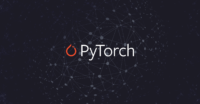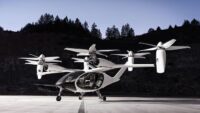Keras has become one of the most popular libraries in the deep learning ecosystem, lauded for its simplicity, versatility, and integration capabilities. Whether you’re a beginner venturing into machine learning or an experienced developer building production-level applications, Keras has something to offer. In this Keras review, we’ll dive into its features, benefits, limitations, and best use cases, providing a comprehensive guide to help you make an informed decision.
Keras Review : Features of Keras
- User-Friendly API
- Keras offers an intuitive and minimalistic interface, making it accessible for beginners while still providing advanced functionalities for experts.
- It supports modularity, allowing users to easily add layers, loss functions, optimizers, and metrics.
- Integration with TensorFlow
- Since its integration with TensorFlow, Keras has gained robust backend support, enabling high-performance computation on GPUs and TPUs.
- Pre-Trained Models
- Keras provides access to pre-trained models like VGG, ResNet, and Inception, which can be fine-tuned for specific tasks, saving time and computational resources.
- Extensibility
- Keras allows for easy customization, enabling developers to write their own layers, metrics, and loss functions.
- Community and Ecosystem
- With a large and active community, Keras offers abundant resources, including documentation, tutorials, and forums.
Benefits of Keras
For Beginners
- Simplicity and Accessibility: Its high-level API is designed to minimize complexity, making it an excellent choice for those new to deep learning.
- Clear Documentation: Comprehensive guides and tutorials help beginners quickly get up to speed.
For Experts
- Flexibility: Developers can customize every aspect of their model, from layers to training loops.
- Scalability: Integration with TensorFlow allows Keras to handle large-scale models and datasets.
Speed of Prototyping
Keras is ideal for rapid experimentation, thanks to its straightforward syntax and ability to quickly iterate through ideas.
Limitations of Keras
- Not as Low-Level as PyTorch
- While Keras simplifies model-building, it may not offer the granular control needed for research-level customization compared to PyTorch.
- Debugging Challenges
- The abstraction can make debugging more difficult, especially for intricate model architectures.
- Dependency on TensorFlow
- Since its merger with TensorFlow, Keras’ performance and updates are tied to TensorFlow’s ecosystem.
How Keras Compares with TensorFlow and PyTorch
| Feature | Keras | TensorFlow | PyTorch |
|---|---|---|---|
| Ease of Use | Beginner-friendly | Moderate complexity | Requires advanced knowledge |
| Customizability | Moderate | High | Very high |
| Performance | Excellent with TensorFlow | High | High |
| Community Support | Extensive | Extensive | Growing rapidly |
Is Keras Suitable for Production-Level Applications?
Yes, Keras is suitable for production when used with TensorFlow. The TensorFlow-Keras ecosystem ensures high scalability, deployment support, and optimization for cloud and edge devices. However, advanced use cases requiring low-level manipulation may benefit from PyTorch or native TensorFlow.
Pros and Cons for Different Expertise Levels
For Beginners
- Pros:
- Simple syntax
- Abundant learning resources
- Cons:
- Limited exposure to low-level operations
For Experts
- Pros:
- Supports advanced customization
- Seamless integration with TensorFlow
- Cons:
- May feel restrictive compared to PyTorch for cutting-edge research
Best Use Cases for Keras
- Image Classification and Computer Vision
- Leverage pre-trained models and custom CNNs for tasks like object detection.
- Natural Language Processing (NLP)
- Ideal for sentiment analysis, language modeling, and translation tasks.
- Prototyping Models
- Its simplicity makes it perfect for quickly testing ideas and architectures.
Insights from Individual Experiences
Testimonials
- “Keras allowed me to quickly build a convolutional neural network for an image recognition project. Its high-level abstraction saved me weeks of coding.”
– John D., AI Researcher - “As a beginner, I found Keras to be incredibly intuitive. The documentation was clear, and I was able to build a functional neural network within a day.”
– Alice R., Data Scientist - “The integration with TensorFlow made scaling my models seamless. However, I occasionally switched to PyTorch for projects requiring intricate control.”
– Michael B., Machine Learning Engineer
Keras Review Conclusion
Keras is an excellent choice for beginners looking to learn deep learning and experts seeking a tool for rapid prototyping. While it may not provide the granular control of PyTorch, its integration with TensorFlow ensures scalability and production readiness. Whether you’re building a simple feedforward network or experimenting with GANs, Keras strikes a perfect balance between usability and functionality.
For those prioritizing ease of use, community support, and quick deployment, Keras remains a top-tier tool in the deep learning toolkit.










